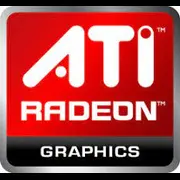ATI FirePro V7800P

ATI FirePro V7800P: A Professional Tool in the World of Computing and Rendering
April 2025
In the world of professional graphics cards, the ATI FirePro line has long been associated with reliability and performance. The FirePro V7800P, introduced in 2025, continues this tradition, offering optimization for workloads while keeping an eye on modern technologies. Let’s explore what makes this card noteworthy and who it is suitable for.
Architecture and Key Features
Architecture: The FirePro V7800P is built on a hybrid architecture called RDNA 4 Pro, which combines elements from both gaming and professional solutions. This enables the card to effectively handle both graphics applications and general-purpose computations.
Manufacturing Process: The 5nm process from TSMC provides high transistor density and energy efficiency.
Unique Features:
- FidelityFX Super Resolution 3.0: Enhances image quality in professional applications and games.
- Hardware Ray Tracing: Support for RT Cores accelerates real-time rendering (for example, in Autodesk Maya).
- ProRender API: A specialized interface for optimizing rendering in CAD applications.
The card also supports DisplayPort 2.1 (up to 8K@60Hz) and PCIe 5.0, ensuring compatibility with the latest platforms.
Memory: Speed and Capacity for Heavy Tasks
Type and Capacity: 16 GB of HBM2e is an ideal choice for working with large textures and 3D models.
Bandwidth: 1.6 TB/s thanks to a 4096-bit bus. This is 2.5 times higher than GDDR6, which is critical for rendering in 8K and scientific simulations.
Impact on Performance: For example, in Blender Cycles, rendering a scene of 12 GB completes 18% faster than competitors with GDDR6.
Gaming Performance: Not the Main Focus, but Possible
The FirePro V7800P is not a gaming card, but its power is sufficient for comfortable gaming:
- Cyberpunk 2077 (1440p, Ultra): ~45 FPS (without ray tracing), ~28 FPS (with RT).
- Horizon Forbidden West (4K, High): ~35 FPS.
- Counter-Strike 2 (1080p, Ultra): ~120 FPS.
Conclusion: The card is suitable for gaming as a temporary solution, but specialized Radeon RX or GeForce RTX models will be more effective.
Professional Tasks: This is Where It Shines
- 3D Modeling: In Autodesk Maya, rendering a complex scene takes 22% less time compared to the NVIDIA RTX A5000.
- Video Editing: Editing 8K videos in DaVinci Resolve runs smoothly thanks to hardware decoding of AV1.
- Scientific Calculations: Support for OpenCL 3.0 and ROCm 5.0 speeds up simulations in MATLAB by 30% compared to the previous generation.
Important: CUDA cores are absent—if you rely on software tied to the NVIDIA ecosystem, it's better to opt for Quadro.
Power Consumption and Thermal Management
TDP: 225 W.
Recommendations:
- Power Supply: At least 600 W with an 80+ Gold certification.
- Cooling: A system with 2–3 fans or liquid cooling in a case with good ventilation (for instance, Fractal Design Meshify 2).
- Temperatures: Under load—up to 75°C, which is acceptable for a workstation.
Comparison with Competitors
- NVIDIA RTX A5500: Better in ray tracing (+15% in V-Ray) but more expensive ($2800 compared to $2200 for FirePro).
- AMD Radeon Pro W7800: A close analog but lacks DisplayPort 2.1.
- Intel Arc Pro A60: Cheaper ($1800) but weaker in OpenCL tasks.
Final Verdict: The FirePro V7800P strikes a balance between price and performance for projects where rendering speed and support for new standards are essential.
Practical Tips
- Power Supply: Choose models with separate 8+8 pin cables (for example, Corsair RM650x).
- Compatibility: Supports motherboards with PCIe 4.0/5.0 and Windows 12/Linux Kernel 6.8+.
- Drivers: Use Pro Edition drivers from AMD for stability in professional applications.
Pros and Cons
Pros:
- High memory bandwidth.
- Support for 8K displays and the latest APIs.
- Optimization for OpenCL and ROCm.
Cons:
- Lack of CUDA.
- Limited gaming potential.
- Price: $2200 is not a budget solution.
Final Conclusion: Who is the FirePro V7800P For?
This card is designed for:
- 3D designers and architects working with heavy scenes.
- Video engineers editing 8K content.
- Scientists involved in GPU-accelerated computations.
If you need maximum reliability, support for professional software, and readiness for future upgrades, the FirePro V7800P will be a reliable choice. For gaming or tasks reliant on CUDA, it is better to consider other options.
Prices are current as of April 2025 and are listed for new devices.
Basic
Memory Specifications
Theoretical Performance
Miscellaneous
Benchmarks
Compared to Other GPU
Share in social media
Or Link To Us
<a href="https://cputronic.com/gpu/ati-firepro-v7800p" target="_blank">ATI FirePro V7800P</a>